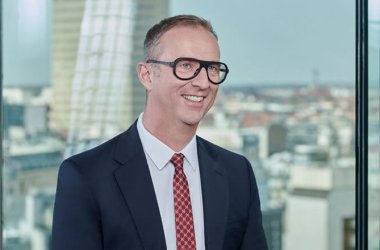Ram Narayanan, Country Manager, Check Point Software Technologies Middle East, on the cybersecurity landscape and what has changed in the last one year.

What has changed in the cybersecurity landscape in the last one-and-a-half years, especially post the pandemic?
It has changed drastically in many ways, Of course, the threat landscape was always there before and after the pandemic, but then it’s just that the focus has changed. Previously, when cyberattacks used to happen, they were more targeted towards enterprise businesses where they could attack those companies and then try and steal their data. Now, with the work from home scenario, people are working from their personal devices, and connecting from different sources. People are opening up their network, basically poking holes into every protected perimeter, so the target has become the users and the second thing is that, from a business perspective, nothing stopped even during the pandemic. Business didn’t stop. They simply had to get the job done, come what may. But some companies that were a bit behind on the legacy side of things, they found it difficult to move forward to adapt to this change. So I think this is what has changed, if you see today.
How does Check Point position itself in this changing threat landscape?
Check Point is a visionary and a leader in in cybersecurity and if you go back to the past, Check Point was the first commercially available firewall and that’s why Check Point was known and still continues to dominate the industry. But now, in the last four or five years, we have understood that the cybersecurity landscape doesn’t just stop with the firewall, and this is where starting 2021, after the pandemic we focus on three pillars: on an overall single architecture we call Infinity. Infinity is the overall platform to cover all the cybersecurity needs an enterprise will be looking for. The second aspect is Cloud Guard, which is basically securing assets on the cloud. The third pillar is Harmony, which is more focused on user and access-basically protecting the users from endpoints-could be traditional laptops and desktops to mobile devices, because that has become an endpoint. And then access, basically the zero-trust network access, the SASE kind of architecture which customers are moving to. So, in simple terms, it’s these three pillars covering the network, covering the cloud, covering user and access in a single unified architecture which is Infinity-a single, consolidated platform where you can manage all of this with highest level of visibility and a completely integrated solution. So this is how the product portfolio has evolved for Check Point over the years.
Right now, we can proudly say we are the one and only complete cybersecurity company offering security solutions for all of an enterprise’s needs-starting from their legacy data center networks to the future cloud, as well as securing user and access.
What in your opinion is the biggest cyber threat that organizations are facing now?
I’m very happy to say that the Check Point research team we have, is one of the largest teams. We have close to 140 researchers involved in analyzing and researching how the landscape is evolving, thinking like hackers, from their perspective. What we see from these studies is that cyberattacks are continuing to rise and is targeting the users more and more. Again, out of all the verticals, the education vertical is the most hit because now schools are reopening. We’re coming up with new findings all the time-cyberspace is extremely dynamic. Once one approach is tested, people will find ways to protect it and then you need to find the next step, but on a larger perspective what I can say is that ransomware continues to rise and it has become easy-in case you’re not protected, it is easy to steal the data and ask for a ransom. Second, the cloud, even though it is easy, scalable and agile, unless you protect your assets, it’s easy for you to get exposed, because you’re putting something out there in the public domain and the time it takes for you to be targeted is much lower. The third aspect that we’re looking at is the OT technology side-the operational technology side, which is more of the utility and manufacturing companies which were not focused earlier from a cyber perspective, but now they’re getting connected to the normal IP network and it’s a life and death kind of a situation, where anything can happen. This is where it becomes critical.
To conclude, I would like to say that generation five of attacks are going to stay, meaning that the supply chain attacks that you have seen in the recent past- one attack affecting 80,000 organizations or 1000s of organizations at one time’. This is what Check Point has been predicting for, for the last few years- that generation five of attacks, the supply chain kind of attacks are going to happen and are here to stay. It is no longer a one-off kind of attack, it is happening more frequently, and organizations have to be prepared to secure themselves against these generation firewall threats. Check Point is in a leading position to kind of provide both technology as well as solutions for enterprises to protect themselves against these generation firewall attacks.





